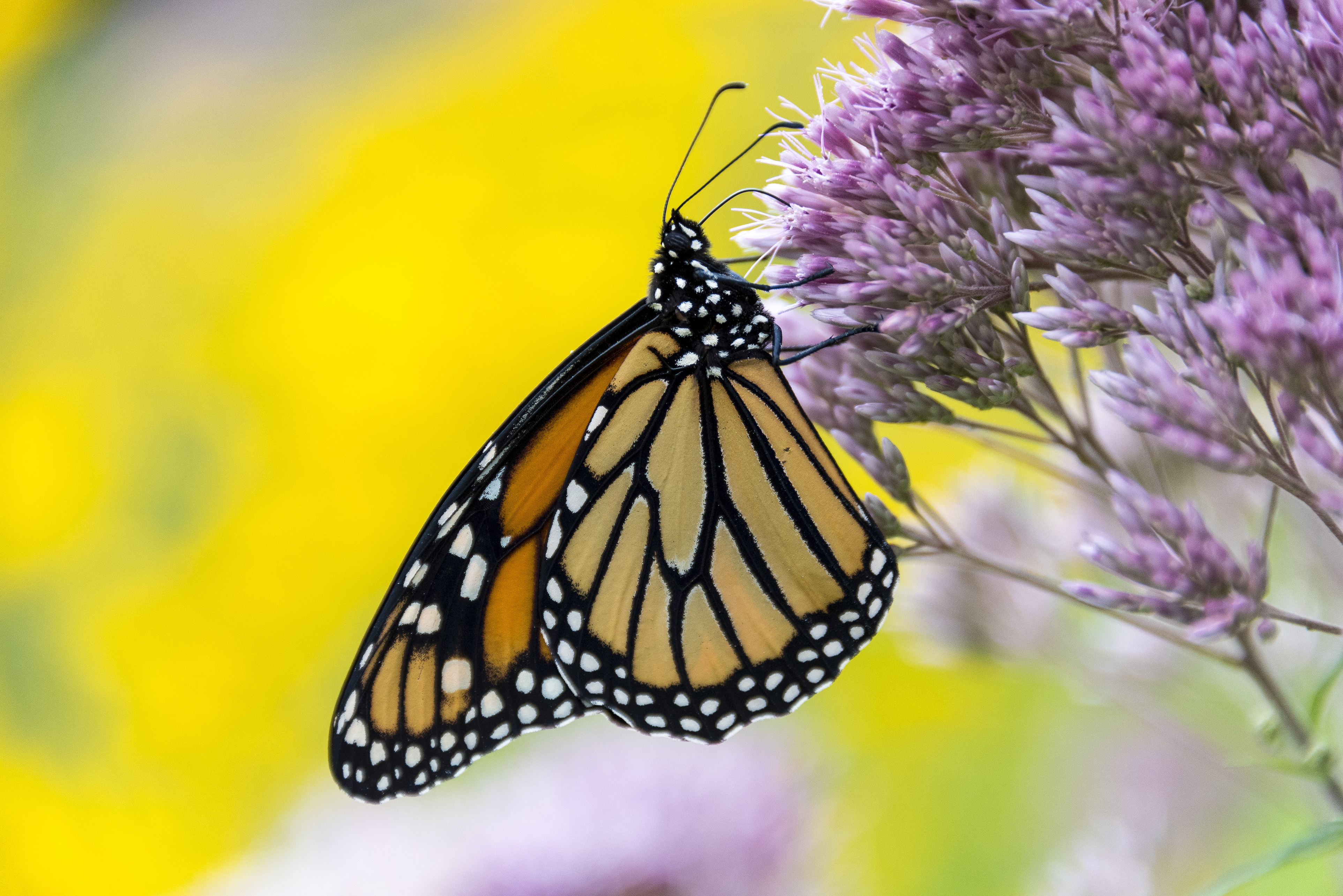10
Sep
Same Pesticides that are Killing Bees Significantly Shorten Monarch Lifespan
 (Beyond Pesticides, September 10, 2019) Monarch populations on both coasts of North America are in serious decline, and new research indicates that same chemicals killing bees may be responsible for similar impacts to these charismatic butterflies. Published in the journal Insects by Washington State University researcher David James, PhD, the study is the first to investigate how adult monarchs react to chronic, low dose exposure to the neonicotinoid insecticide imidacloprid. Many are calling the decline of pollinators and other insect species a form of apocalypse and mass extinction. What’s happening with insects must be considered a warning for species higher up in the food chain; it’s therefore critical that our observations of the natural world lead to corrective action before it’s too late.
(Beyond Pesticides, September 10, 2019) Monarch populations on both coasts of North America are in serious decline, and new research indicates that same chemicals killing bees may be responsible for similar impacts to these charismatic butterflies. Published in the journal Insects by Washington State University researcher David James, PhD, the study is the first to investigate how adult monarchs react to chronic, low dose exposure to the neonicotinoid insecticide imidacloprid. Many are calling the decline of pollinators and other insect species a form of apocalypse and mass extinction. What’s happening with insects must be considered a warning for species higher up in the food chain; it’s therefore critical that our observations of the natural world lead to corrective action before it’s too late.
Monarchs in the study were reared from untreated milkweed plants in Washington State in 2018, totaling 40 adult butterflies. Eleven males and the same number of females were assigned to be treated with the insecticide, while the remaining butterflies acted as a control. Both groups were provided a sugar solution, with the treated group’s solution containing 23.5 parts per billion imidacloprid, a dose similar to what a butterfly could encounter in a real world scenario.
Monarchs that fed on contaminated sugar solution experienced a significantly shortened lifespan. By day 22, 78.8% of monarchs in the treatment group were dead, compared to 20% mortality within the control group. The treatment group showed marked declines before death – at day 12 displaying uncoordinated flapping of their wings and uncontrolled body vibrations that prevented them from flying.
Monarchs migrate north to south across the North American continent. But not one individual butterfly makes the journey, it takes several generations of monarchs to complete a single migration south to breeding grounds in California, Texas and Mexico. A shortened lifespan therefore has significant consequences for how successful this journey will be. “The potential widespread impact of imidacloprid-contaminated crop and wild flower nectar, may be a significant driver of monarch population decline,” the research concludes.
In the 1990s, the eastern monarch population numbered nearly one billion butterflies, and the western population numbered more than 1.2 million. Last year’s winter counts recorded around 93 million eastern monarchs and fewer than 200,000 western monarchs. Imagine such a loss scaled to human proportions. It would be, “so staggering that in human-population terms it would be like losing every living person in the United States except those in Florida and Ohio,” said senior scientist at Center for Biological Diversity Tierra Curry.
Previous studies, one in 2015 and another in 2016, found monarch larvae to be affected by contamination of milkweed plants by neonicotinoid insecticides. Milkweed is the only plant monarchs will lay their eggs on, and the only plant caterpillars are able to feed upon when they’re born. Recent research finds that areas where milkweed often grows leads to contamination totaling 14 different agricultural pesticides. And for monarchs, even finding a contaminated plant is increasingly difficult, as genetically engineered agriculture has led to the near-eradication of its primary food source.
This is unconscionable. It is not that we lack the tools to understand the magnitude of this crisis. It is not that we lack solutions. It is that we have stood by for the last 30 years and permitted not only monarchs, but other pollinators, and an entire class of species, the insects, to reach catastrophic levels of decline. Saving monarchs, bees, pollinators, and the insect world will not be easy, but unless we undertake this charge human civilization may follow in their decline.
Organize your friends, neighbors and community; tell us you’re fighting for local pesticide reform. The stakes are too high to continue sitting behind a computer, reading article after article and falling into doom and gloom. We understand the crisis – we know what the solutions are. Scientists, whether professional or citizen, must translate their anger and upset over the world today into change for the better. It is only through informed and active citizenry that we’ll save pollinators and stave of these apocalyptic scenarios.
All unattributed positions and opinions in this piece are those of Beyond Pesticides.
Source: Insects











Nice post. Bees should be protected by all means necessary for their well being and service to humans
September 28th, 2019 at 1:12 am